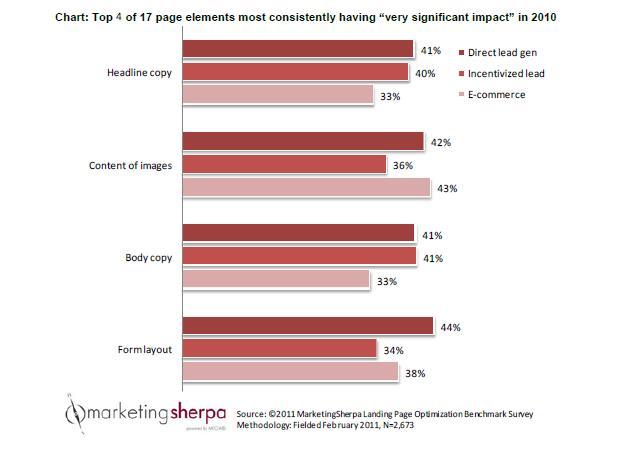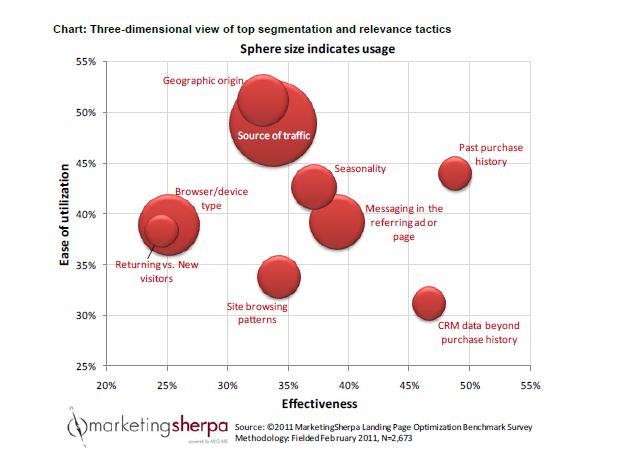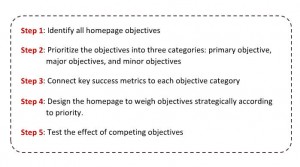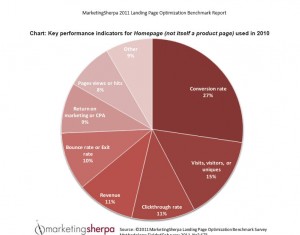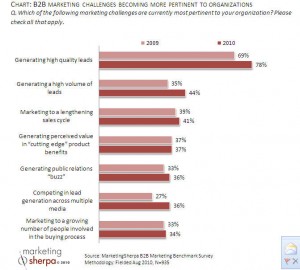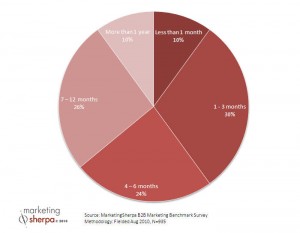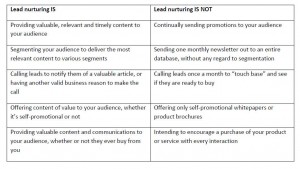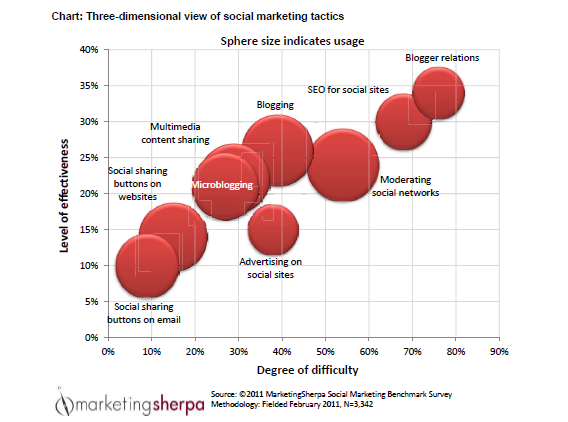Landing Page Optimization: 2 charts describing the best page elements to test and how to test them
Optimization testing can be daunting. With so many elements on a Web page, and so many ways each could be customized, knowing what to test and how to change it can feel like testing spaghetti the old college way (throw it at the ceiling and see if it sticks).
But optimization does not have to be daunting or random. Some marketers will receive a crash course in landing page optimization at our Optimization Summit this week. If you can’t make it, don’t fret. There’s always next year. In the meantime, MarketingSherpa just published the 2011 Landing Page Optimization Benchmark Report.
I pulled two charts from the report to give marketers some reference points when designing their tests. Hopefully they will help keep crusty pasta off your ceiling.
This chart lists the four page elements that rank most consistently as having a “very significant impact” across three optimization objectives. Note that a different page element ranks highest for each objective:
- Direct lead gen: The highest performing element is the form layout at 44 percent
- Incentivized lead: The highest performing element is the body copy at 41 percent
- Ecommerce: The highest performing element is the image content at 43 percent
The chart lists only four of 17 page elements measured by our analysts, so there are many other elements that can be impactful in your tests. Your results may not mimic this data exactly, but this chart points to elements that other marketers are seeing as having the most impact.
Once you select a page element to test, the big question becomes “how do we change it?” This chart lists tactics you can use to segment your audience and add more relevance to your optimization pages. Each tactic is ranked by its effectiveness, ease of use, and usage rate among marketers.
The far right of the chart features the most effective tactics: segmenting based on purchase history and other CRM data. Customizing landing pages to a customer’s purchase history appears to be an opportunity for marketers. It is the most-effective tactic listed and appears relatively easy to implement.
In the report, our analysts also point to another opportunity: messaging in the referring ad or page.
“Using the messaging in the referring ad or page can be especially easy to apply when the marketer also controls that messaging, making it a highly efficient way to segment,” according to the report.
However you go about your optimization tests, it is important that you test accurately and continuously learn from the results. The data in these charts can provide reference points to guide your plans, but only your team can uncover the best tactics to fit your audience and your brand.
Related resources
2011 Landing Page Optimization Benchmark Report
Marketing Research Chart: Top website objectives to determine optimization priorities and tactics
Landing Page Optimization: Minimizing bounce rate with clarity
Optimization and A/B Testing: Why words matter (for more than just SEO)
Members Library — Campaign Analysis: Optimization expert lists 5 tweaks to boost an email campaign’s conversions
Members Library — Landing Page Optimization: How to serve 2 markets with 1 page
Members Library — How to Plan Landing Page Tests: 6 Steps to Guide Your Process



